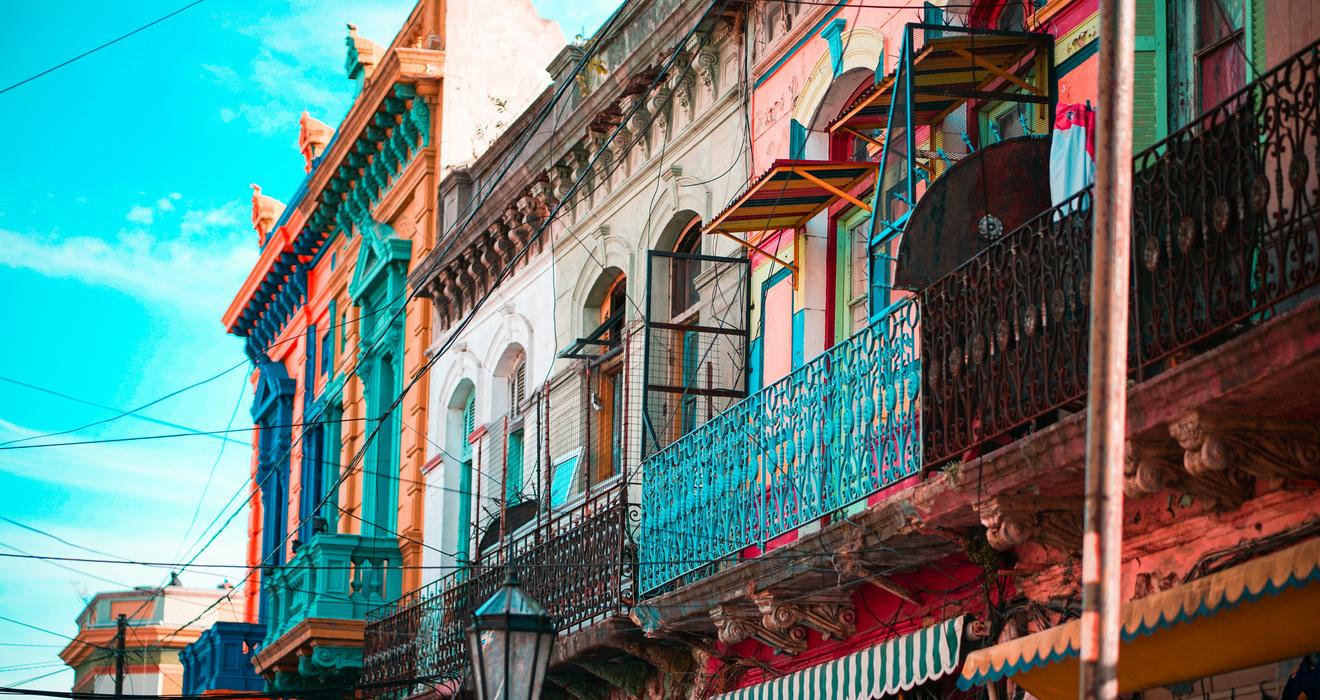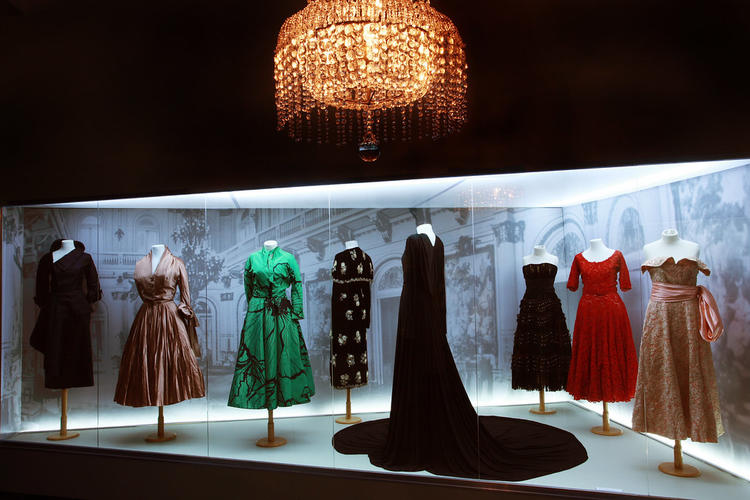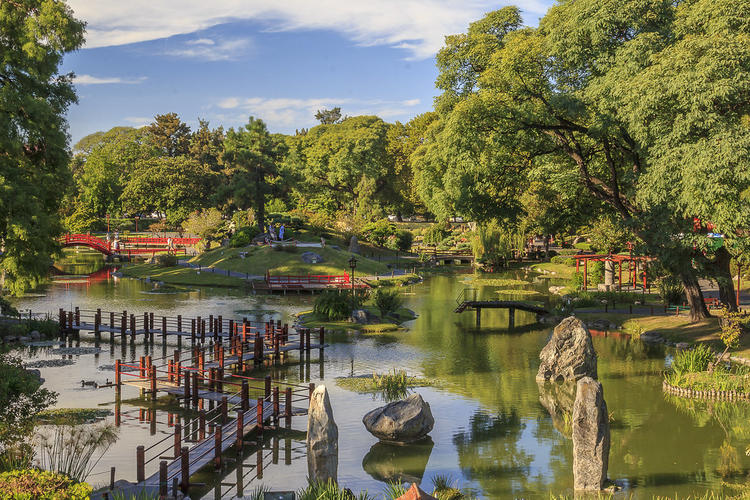
Princeton Alumni Curated This Guide to Buenos Aires
In the first Latin American destination in PAW’s city guide series, Princetonians suggest where to read, eat, and explore in Buenos Aires
Many describe Buenos Aires as a mix of global metropolises: There’s a bit of New York’s Central Park in the Palermo Woods, Parisian flair in the Beaux-Arts buildings of Recoleta, a love of roasted meat and soccer that rivals Rio de Janeiro. But when one considers the massive influx of immigrants into Argentina leading up to the 20th century — a whopping 6.6 million people, second only to the United States — the cosmopolitan quality of its capital city comes as no surprise. To create a guide for this diverse and dynamic place, we got a tour from alumni who call the place home. Here you’ll find where they read, shop, eat, and spend their “perfect days” — and how you might come to find your own slice of home here, too.
New and Notable: What’s Happening in 2025
- Every year, the city of Buenos Aires hosts special themed nights (#NochesBA) — Night of the Museums, the Bookstores, the Theaters, the Temples, and so on — when cultural institutions stay open late and offer free programming.
- The largest book fair in the Spanish-speaking world, the 49th Feria Internacional del Libro (International Book Fair) expects upwards of a million visitors, including 12,000 industry folks for conferences, courses, and signings (April 4 through May 13).
- The annual Buenos Aires Tango Festival returns this fall with another rendition of the world’s largest tango event, the World Tango Dance Tournament (or “Mundial de Tango”).
- The Mercado de Estancia Vigil — a country store opened by renowned winemaker Alejandro Vigil, who has worked with more than 80 percent of the wineries in Mendoza’s Uco Valley — will expand his vision of Mendoza-in-Buenos Aires with a new restaurant, vineyards, and a winery opening on-site in 2025.
Princeton Connection
Hailing from Buenos Aires, the late Ricardo Piglia, emeritus professor of Spanish and Portuguese who died in 2017, was considered one of the most important Latin American contemporary writers. “His insights, his teachings, and his generosity opened up new perspectives for many generations,” says Edgardo Dieleke *13, a student of Piglia’s who teaches literature and film studies at Universidad de San Andrés in Buenos Aires.
Argentine writer Jorge Luis Borges became the unlikely focus of a campus celebration when Mario Vargas Llosa — a Peruvian writer — won the Nobel Prize in Literature the year he taught a course on Borges at Princeton. Rafael Romero ’12 told The New York Times in 2010 about how, on the first day of class, Vargas Llosa announced “that in 50 or 100 years, if the world remembers only one Spanish-language author, it would be Borges.”
In 1925, four years after his first Princeton visit, Albert Einstein delivered a series of 12 lectures in Buenos Aires whose summaries were published in La Prensa, the main newspaper of the time. The lectures’ impact on the local scientific community — and the emphasis it brought to pure mathematics and theoretical physics in the city’s universities — is remembered to this day. Financially supported in part by the city’s Jewish community, Einstein’s trip is also considered a notable moment for Argentine Jews, who form the largest Spanish-speaking Jewish community in the world.
An Art Lover’s Guide to BA’s Museums
Three essential stops on a culture crawl, recommended by Ann Noguer ‘05. Noguer is the founder and CEO of Puentes Abroad, an educational travel company that coordinates study abroad and internship programs in Argentina and Uruguay for American university students. She moved to Buenos Aires in 2009 and lived there until moving to Bariloche during the pandemic; she continues to regularly visit the city.
Latin American Art Museum of Buenos Aires (MALBA): This collection — of 700 artworks and counting — features some of the finest work by artists of the Latin American region, including paintings by Frida Kahlo and Brazilian modernist Tarsila do Amaral. Encompassing a range of forms from sculpture to photography, its installations are constantly in rotation; Third Eye: The Constantini Collection in Malba, which features works by Kahlo, Amaral, Diego Rivera, and Wifredo Lam, is on display until August 2025. During the visit, treat yourself to a fancy bite at Coronado, a restaurant and café that opened in the lobby of MALBA in 2024.
Museo Xul Solar: An expressionist and surrealist painter, sculptor, and writer, Xul Solar was one of the most important figures of 20th-century Argentine art. His family home on Laprida Street and studio have been converted into a museum dedicated to his life and work.
Museo Evita: Few have captured the collective porteño imagination as much as Eva Duarte de Perón, who rose from poverty in the small town of Los Toldos to become an actress in Buenos Aires and eventually the First Lady of Argentina. Featuring objects and mementos that belonged to Evita, as well as interactive exhibits on her life as an actress before marrying Juan Domingo Perón, this museum is dedicated to her life and memory. Do a 45-minute guided tour, bookable on the museum’s website, to fully take advantage of the museum’s content. — Ann Noguer ‘05
Tasting Menu
Part-time residents and full-time food lovers recommend what to eat (and where)
To look for Argentine food is a little like seeking “American cuisine,” says Jordan Salama ’19, a writer and journalist whose paternal side of the family has had roots in Buenos Aires for multiple generations. (Salama’s most recent book, Strangers in the Desert, traces the history of his great-grandfather, the first to leave his native Syria for Argentina.) What is “Argentine” but a combination of the country’s multiple cultural influences? If one were to narrow it down, the staples of the porteño diet might include a breakfast (or midday snack) of sugar-coated medialunas; a hit of deep-fried or baked empanadas; dulce de leche for dessert, and, on Sundays, a big asado (“roast”) with family and friends. Don’t forget maté, a caffeine-rich herbal drink made with the leaves of the yerba mate plant.
Need restaurant recommendations? Princetonians offer several:
- Milion: Argentine fine dining with a rather special setting in an old mansion; try to grab a table on the patio in the secret garden.
- Casa Coupage: Another fine-dining option with an impressive tasting menu and selection of Argentine wines, carefully picked by the owner-sommelier, Santiago Mymicopulo.
- Terrace of the Palacio Duhau Park Hyatt: The serene outdoor terrace is perfect for an afternoon snack or drink, overlooking the gardens of a beautiful hotel in the Paris-reminiscent Recoleta neighborhood.
- El Obrero: A traditional, no-frills restaurant serving up pasta, fish, meat, and other simple classics; a great spot for lunch.
- Fervor: A typical Argentine parrilla (steakhouse) where you can try various cuts of meat.
- Pizzeria La Mezzetta: A casual, standing-only pizzeria for slices (or pies to go). Try the famous Argentine special fugazzeta (cheese and onions) slice.
- London City or Café Tortoni: two popular cafés along Avenida de Mayo where you can try medialunas with café con leche for breakfast. (In general, the city’s corner café-bars — the Argentine equivalent of American diners — are a hit: “They’re always open, and you can never go wrong with a cortado en jarrito and a medialuna de manteca,” Salama says.)
- For recommendations in English, check out the website Pick Up the Fork by Allie Lazar, an American who has lived in Argentina for more than a decade. Organized into neat and easily navigable tables, Lazar’s entries offer food reviews accompanied by fun (and sometimes irreverent) narratives.
— Ann Noguer ’05, Jordan Salama ’19, and Martín Marimón *17
Buenos Aires Is for Book Lovers
There’s no doubt Buenos Aires is one of the world’s foremost literary cities. At La Biela café, it’s easy to imagine Borges and Adolfo Bioy Casares sipping coffee as they planned their next screenplay. In modern times, contemporary writers like Mariana Enriquez and Samanta Schweblin — members of the “new Argentine narrative” group — intrigue readers with stories infused with the horrors and mysteries of an Argentina under military dictatorship. The city has always been full of bookshops stocking local and international titles, joining generations of porteños who have spent many long afternoons leisurely reading a tome.
Martín Marimón *17 is an associate professor of history at Universidad Pedagógica Nacional. His top bookstores would include Libros del Pasaje, Falena, and Céspedes in the Palermo Soho and Colegiales neighborhoods, where visitors can “browse for Argentinian classics while enjoying a coffee,” he says. Otherwise, the central thoroughfare of Avenida Corrientes is full of second-hand bookshops worth visiting during a bookstore crawl.
Pre-read list: When it comes to the classics, Marimón suggests The Aleph, the famed short story collection by Jorge Luis Borges, as well as Bioy Casares’s novel The Dream of Heroes. For something contemporary, there is César Aira’s noir novel Shantytown about a man who fumbles into the world of drugs, murder, and crime. The academically inclined might enjoy Diego Armus and Lisa Ubelaker’s The Buenos Aires Reader, published last year, and as a bonus Marimón — who has made a career out of exploring the urban history of Buenos Aires — would add James Scobie’s Buenos Aires: Plaza to Suburb, 1870-1910.
Park Hopping
A trip to Buenos Aires wouldn’t be complete without time spent in its green spaces. Along the city’s eastern perimeter runs the Central Park-like bosques de Palermo (“Palermo Woods”), a series of green spaces — including the Tres de Febrero Park, the Japanese Garden, the Rosedal Garden, and the Ecoparque — where people literally stop to smell the roses, and watch Patagonian hares roam freely on park grounds. Go north to find Lago de Regatas, a popular lake for sunbathing and running. Go south, and you’ll find the biodiverse Costanera Sur Ecological Reserve, where you can bike along boardwalks overlooking the marsh. Closer to the city center is Parque Centenario, a circular park surrounded by flea markets that doubles as a great people-watching spot.
Consider a visit to 19th-century Plaza de Mayo — not a park, per se, but a square sandwiched between the presidential residence and the Metropolitan Cathedral (the former seat of Pope Francis) — and learn about the Mothers of Plaza de Mayo, who have marched in the square every Thursday at 3:30 p.m. since the beginning of Argentina’s military dictatorship in 1977. Memories of “the disappeared,” or the dissidents who went missing during this time, abound in Buenos Aires; keep an eye out for plaques and mosaics around the city in signs of remembrance.
My Perfect Sunday: Elizabeth Maass ’78
Hailing from Florida, Elizabeth Maass ’78 and her husband, Robb Maass ’78, bought an apartment in the Recoleta neighborhood in 2003. (“We arrived on a Sunday and had a contract on our apartment by Tuesday,” Maass says.) The couple spend about 10 to 12 weeks a year in the city, divided across three trips.
Here’s how Elizabeth would spend her “perfect day” in the city, in her words:
“I like to start a Sunday in Plaza San Martin, walk down pedestrian-only Florida Avenue, cut to Defensa Street at the Plaza de Mayo, and walk to San Telmo. You’ll get to see what used to be the nicest shopping street in Buenos Aires; the National Cathedral; the Casa Rosada (the president’s residence); and San Telmo, the finest residential area before the 1871 yellow fever outbreak forced residents to the north.
“In Plaza San Martin is the Monumental Tower, an iconic clock tower given by English residents in the early 1900s to celebrate the centenary of Argentina’s independence from Spain. It was called ‘The Tower of the English’ until the 1982 Falklands War (called the Malvinas War in Argentina). Down Florida Avenue is the Kavanagh Building, the tallest building in Latin America when it was built in 1936; it remains a great example of modernist architecture. Next door is the Plaza Hotel, a fine example of art deco from the early 1900s. Keep walking and you’ll come across the 1914 Harrods department store building, which has been largely empty since the store left in 1998. Just a little farther is Galerias Pacifico, a shopping center dating to 1889. It’s still worth walking through. A torture chamber from the Dirty War — the military dictatorship in Argentina from 1974 to 1983, during which an estimated 10,000 to 30,000 people were killed or disappeared — was uncovered in the basement in 1987.
“Turn left at the end of the pedestrian part of Florida and walk a block to Plaza de Mayo. If you face the Casa Rosada you’ll have the National Cathedral on your left; the Cabildo, one of the few colonial buildings left in the city, to your back; and the top of Defensa Street to your right. The crafts markets start at Defensa. If you get bogged down by the crowds, walk on the sidewalks behind the booths and peak through. You’ll eventually get to the flea market at Dorrego Square, which is a treasure hunt if you have your eyes open.
“I like to end my walk at Pulperia Quilapan, a traditional, old, atmospheric restaurant full of Argentine families enjoying their Sunday lunch.”
Tours for Tigers of All Stripes
- In addition to his work as a university professor, Marimón has led tours on history, social issues, and politics around Buenos Aires for close to 20 years. He offers small and bespoke tours depending on his availability. You can reach him at martinmarimon@gmail.com.
- Lunfarda Travel is a boutique city tour company that specializes in curated, authentic local tours of Buenos Aires, centered around different themes and neighborhoods. They run a Jewish Heritage Tour and an Afro-Argentine Heritage Tour among other options.
- Consider traveling 20 miles north from Buenos Aires to reach the Tigre Delta. There, you can hop on a local boat and ride through the Delta, passing the crystal-encased former residence of Argentina’s seventh president, Domingo Sarmiento, along the way. (You can find suggestions for what to do in Tigre at Puentes Abroad.)










No responses yet